'Bamboo Lakou' Wins the Architectural Association's 2013 Foster + Partners Prize
By Bustler Editors|
Thursday, Jun 27, 2013

Related
London's Architectural Association School of Architecture and Foster + Partners have announced the winner of the 2013 Foster + Partners Prize, presented annually to the AA diploma student whose portfolio best addresses the themes of sustainability and infrastructure. The recipient is selected jointly by the AA and Foster + Partners at the end of each academic year.
This year’s prize has been awarded to John Naylor, of Diploma Unit 16, for his project ‘Bamboo Lakou’.
Set in the context of Haiti – a country suffering massive deforestation – the project combines the creation of a sustainable bamboo-growing infrastructure with the development of the vernacular ‘Lakou’ communal courtyard typology. The aims of the project are to establish bamboo within the Haitian construction sector, as an earthquake-resistant alternative to concrete, and to set in motion a long-term reforestation strategy.

Project Description from John Naylor:
At the local time of 16:53 on 12th January 2010 an earthquake of 7.0 hit one of the most densely populated suburbs of Haiti’s capital, Port au Prince. An estimated three million people were affected by the quake. 250,000 residences, 30,000 commercial buildings collapsed, a million people homeless and 316,000 people dead. One month later an earthquake 500 times more powerful, hit central Chile resulting in the deaths of 525. This was a disaster of Haiti’s lack of light weight building materials, working practices, and construction, not nature.
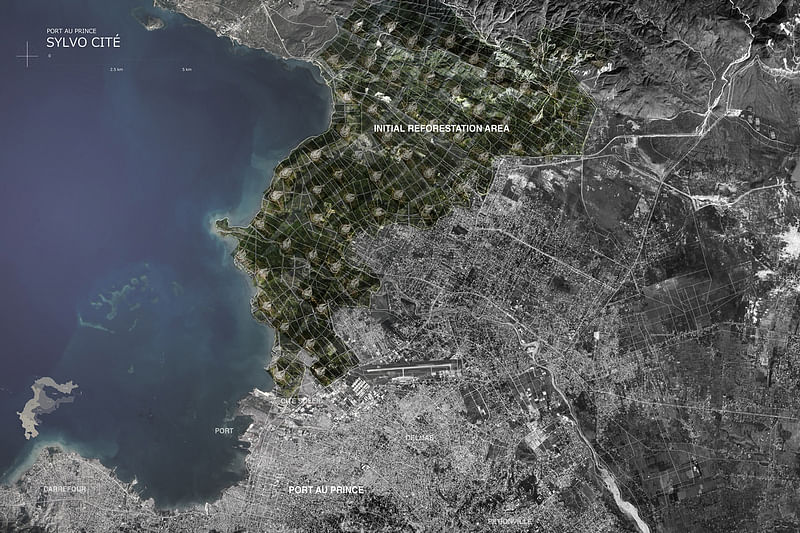
Set in the context of Haiti, a country with massive deforestation and threatened by earthquakes, only heavy concrete and cement are the building materials of choice. As an integral part of a wider reforestation strategy, this project merges a sustainable bamboo infrastructure along with the vernacular ‘Lakou’ communal courtyard typology. This aims to encourage the physical use of bamboo in the Haitian construction sector. The material properties of bamboo provide design opportunities to provide resilience to hurricanes and earthquakes, and affords an assembly logic which intends to communicate a parallel understanding of bamboo’s application beyond the building site. This rematerialisation of a construction industry and subsequent demand, aims to engender bamboo growth in Haiti, a material with wider ecological benefits.
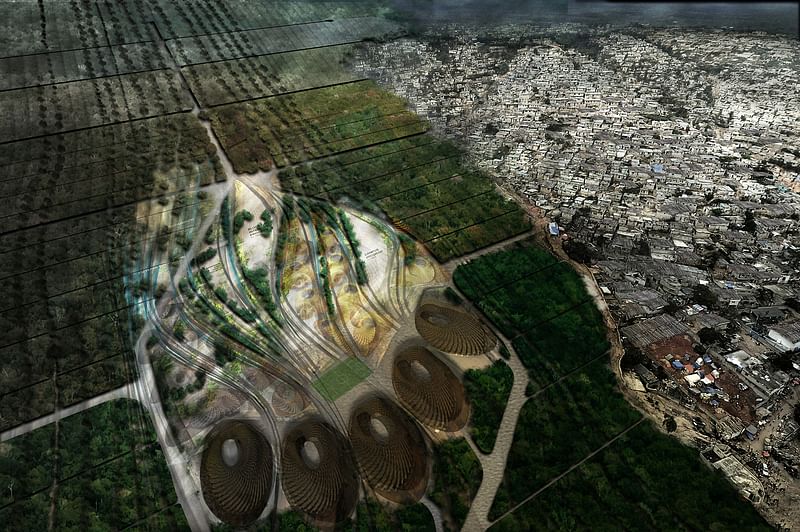

Introducing any new practice of working is difficult in any field. In a proud culture such as Haiti preaching a new form of building to the construction sector is riddled with problems. Low skills, lack of equipment and illiteracy, not to mention theft from a project, whether political corruption or material theft on site, all cause an environment not in a position to implement quality output which is all the more dangerous in Haiti, a site of huge seismic and natural threat. Materials in this location are defined by skill and natural resources. A lack of timber due to deforestation has resulted in concrete becoming the 21st Century vernacular and as a result any skills associated with construction have been aligned to work with concrete.

Initially the ‘Lakou’ courtyard house forms the fundamental urban block and this itself is broken into four stages.
(1) Occupational Strategy; which aims to determine a means of developing solutions of occupation for the local population grounded in the existing Haitian ‘Lakou’ typology of courtyard living.

(2) Material Strategy; looks at what is available in Haiti right now and speculates on how what is available can be compounded in the short term with bamboo. The typology and properties of materials will then determine any subsequent strategies.

(3) Structural Strategy; looks at how bamboo can be implemented into a structural system which allows for the Haitian vernacular ‘Lakou’ design to be implemented. The structural strategy also looks at the limits of design versus materials in seismic areas and tests compounds of materials as well as seismic building techniques to develop a low cost, easily buildable structural system with proven seismic credentials.
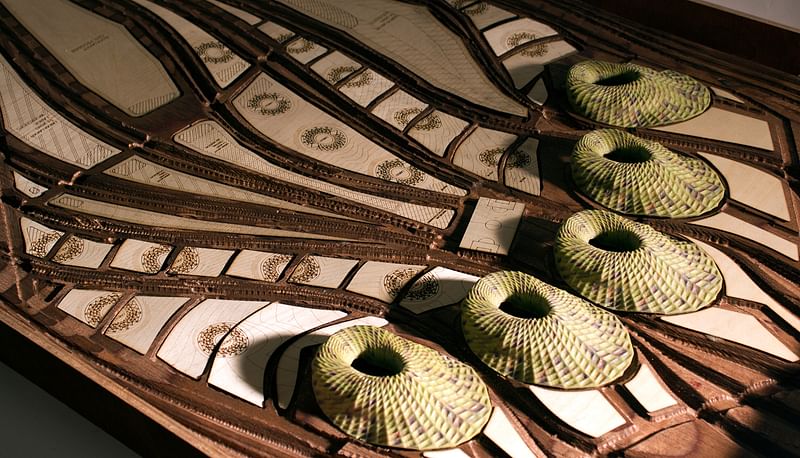
(4) Construction and Assembly Strategy; will produce an assembly logic explicit enough to work initially in a workforce mostly illiterate and yet can result in the successful implementation of aspects 1, 2, and 3, It is also designed that this logic has aspects of construction and material awareness which can propagate nationwide. This being either skill or outsourcing construction beyond the proposed new urbanism. This aims to create standards, knowledge, respect for the material and new economic opportunities.

This technical strategy forms an integral part of making a new timber and bamboo urbanism possible in Haiti. Through initially encouraging the physical use of bamboo in the Haitian construction sector at the building scale, the material properties of bamboo provide design opportunities to provide resilience to hurricanes and earthquakes, and affords an assembly logic which intends to communicate a parallel understanding of bamboo’s application beyond the building site. This rematerialisation of a construction industry and subsequent demand, aims to engender bamboo growth in Haiti, a material with wider ecological benefits and lay the foundations of a new biodiverse dynamic Port au Prince.


Mouzhan Majidi, Chief Executive of Foster + Partners, said: "In John Naylor’s project we see how social and environmental goals can be complementary. We hope very much that the debate this prize generates will encourage students to address the themes of sustainability and infrastructure, which are of increasing relevance to architecture today."
Brett Steele, Director of the Architectural Association School of Architecture, remarked: "John Naylor’s project demonstrates the ways in which infrastructural ideas – and architectural imagination – might today expand beyond the clichés of Modernism to become life itself, literally breathing life into communities, cities and entire countries – today and long into the future."
John Naylor explains: "An exploration of the physical properties of bamboo presented the opportunity to create a new constructional vernacular in Haiti, with bamboo-framed buildings capable of resisting hurricanes and earthquakes. This re-materialization of the country’s construction industry also aims to engender the widespread growth of bamboo – a material with a range of ecological benefits."
Find many more drawings and diagrams of Bamboo Lakou in the image gallery below.

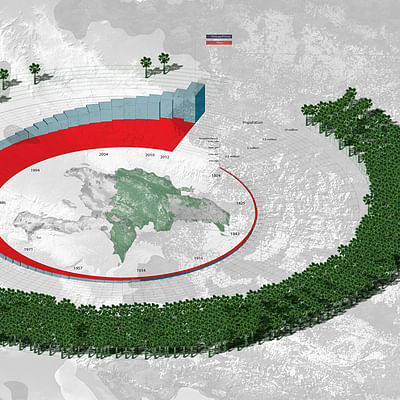
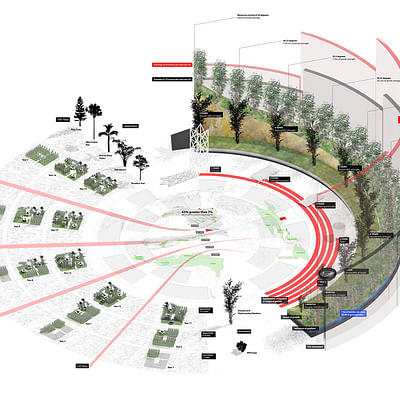


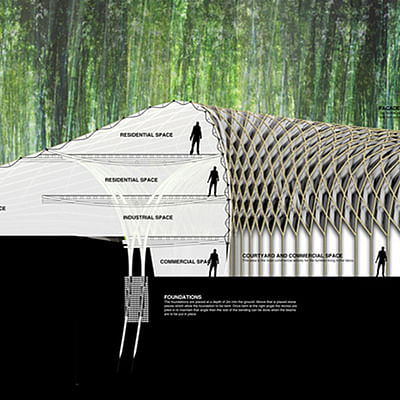
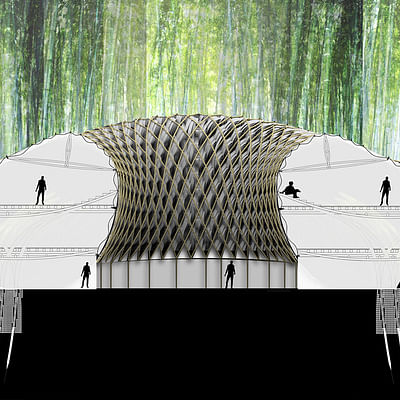

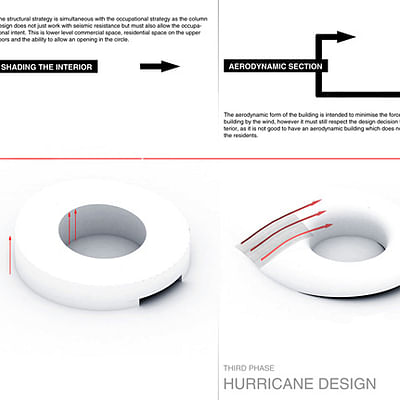

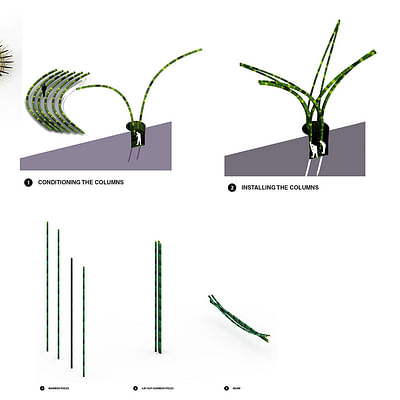

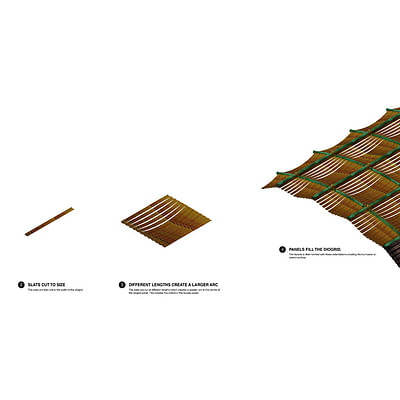
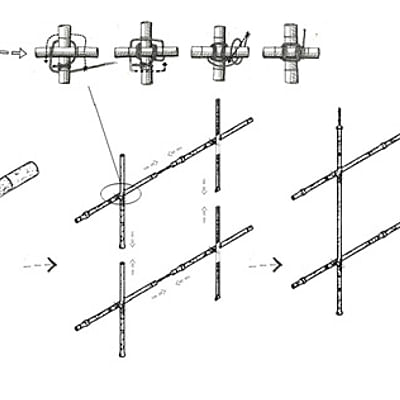

Share
0 Comments
Comment as :